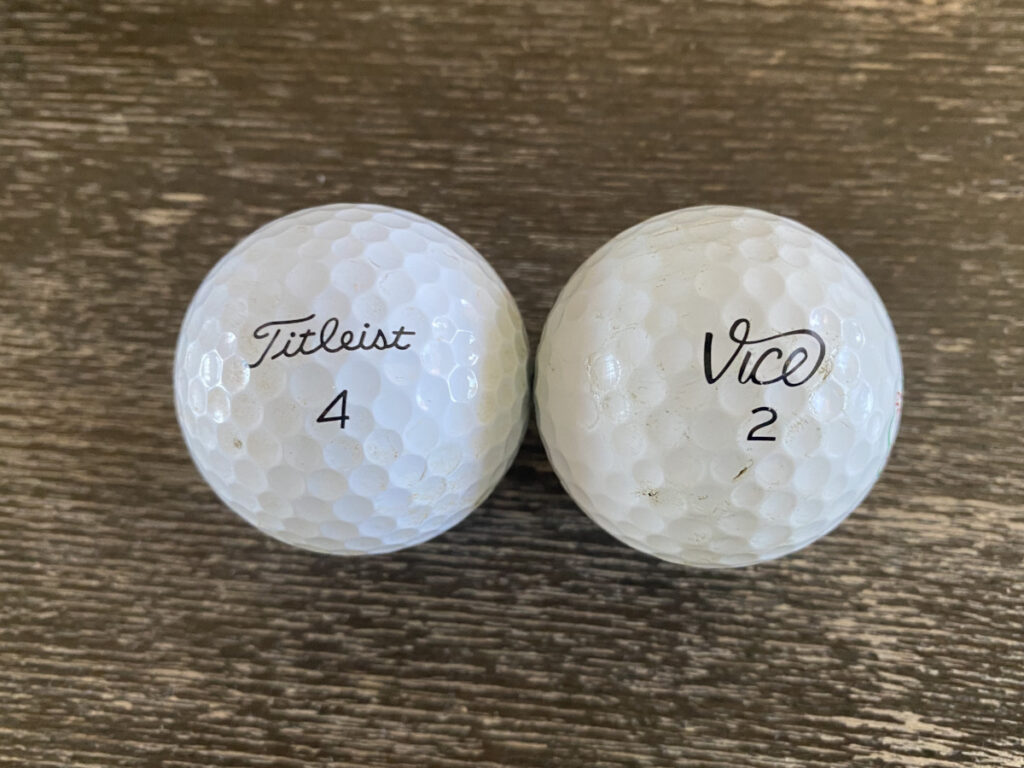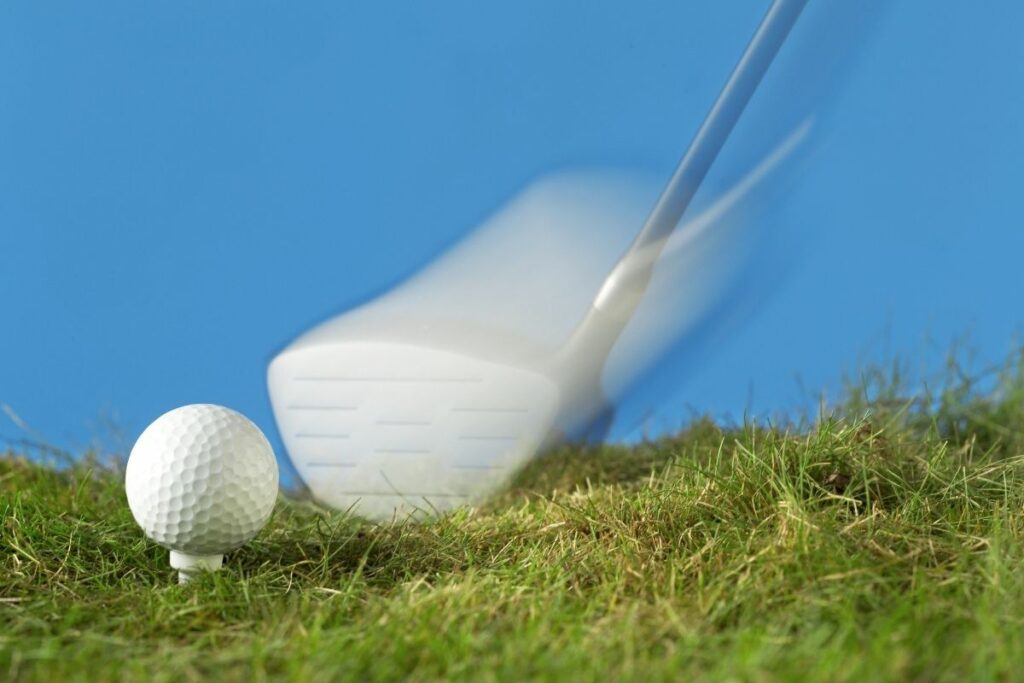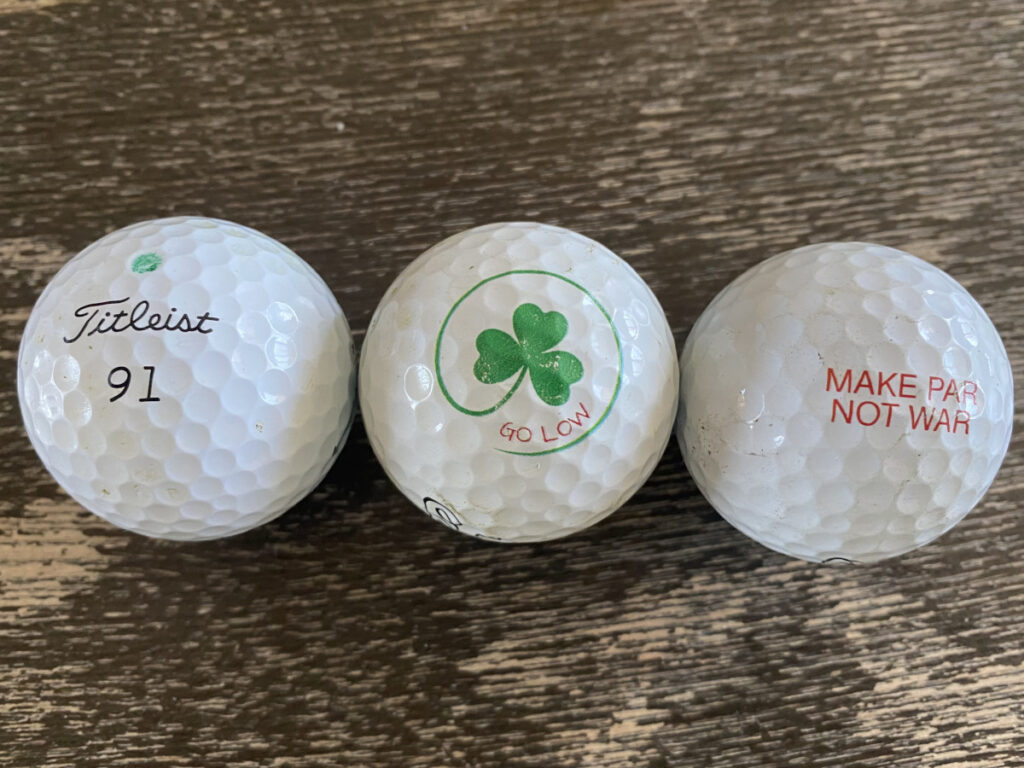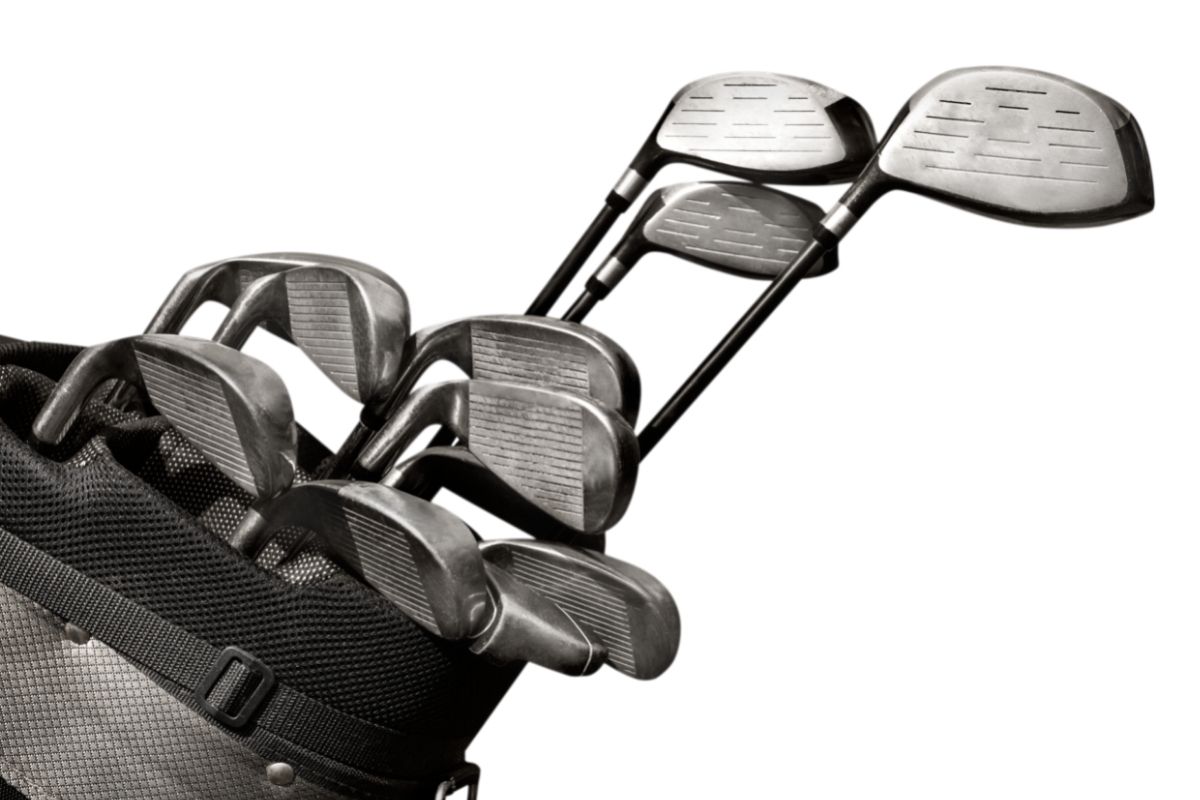We occasionally recommend products we love and might be paid a share of the sale.
As the great Arnold Palmer once said, “Golf is deceptively simple and endlessly complicated.” Golf balls could be described the same way.
Have you ever wondered what the different numbers that are printed on golf balls actually mean?
The answer is both simple and complicated. This article will explain the different numbers found on golf balls, why they are added to the ball, and what the numbers on the golf ball mean to golfers.

What Do The Numbers On Golf Balls Mean?
Golf Balls often include a couple different numbers. Each of these numbers are there for a different purpose and mean different things.
Golf Ball Identification Numbers
The primary number that is printed on both sides of the golf ball is used for identification purposes only. This identification number helps golfers differentiate between their own ball and golf balls that belong to other players.
The golf ball identification numbers are normally printed directly below the brand name of the ball. The brand name and the identification number are printed boldly on both sides of the ball.
You can see two examples of the golf ball identification numbers, along with the brand names, in this image:

Traditionally, the golf ball identification numbers are 1, 2, 3, or 4. This 1-4 numbering scheme is the result of two main factors.
Golf is often played in foursomes, meaning there are four golfers in each group. Numbering the golf balls from 1 to 4 allows each player in the group to have a unique number.
As an example, it’s common for an entire foursome to be playing Titleist balls. In fact, more than two thirds of PGA Professionals play Titleist golf balls. It is important for these players to tell the balls apart. Hitting the wrong ball incurs a stiff penalty and is rather embarrassing.
Packaging is another factor in golf ball numbering. Golf balls are normally sold in boxes with one dozen balls. The 12 balls in a box are further divided into four sleeves of balls. Each of the four sleeves will include three balls, and all three balls in each sleeve will be printed with the same number.
In the modern era of customization, many golf ball manufactures now include a wider range of identification numbers. Golf balls numbered between 5 and 8 are common, and double-digit numbers are also becoming popular.
Many manufactures will even print custom number on golf balls for an additional fee. Some players order golf balls with their age or lucky number printed as the identifying number.
Most golfers do not rely solely on the number for identification purposes. Golfers frequently add other markings to make it even easier to identify their ball. Some people will even print logos, text phrases, or other designs on the golf ball.
We’ll discuss golf ball markings and customization in more detail at the end of this article.
Golf Ball Compression Numbers
The other types of numbers that you find on a golf ball tell you something about the physical properties of the ball. Golf ball compression is a major factor in how the ball will perform when hit, and the compression ratings are occasionally printed on the ball.
The golf ball compression number is sometimes included as part of the name of model for that ball, and it is printed in smaller font on one side of the ball.
Golf ball compression tells you how much the ball with flex or compress when impacted by the club. A hard ball will have a higher number and only compress slightly at impact. Compression numbers are most frequently 90 or 100. Softer balls will have a lower compression number and will be smooshed or compressed more by the club face.

We’re described what golf ball compression is and why it matters in greater detail previously.
Some golf ball manufacturers will signify the compression of the golf by changing the color of the primary identifying number. A red number might mean lower compression, while a black number means higher compression.
Golf Ball Dimple Count Numbers
Occasionally the small, secondary number printed on the golf ball will represent the number of dibbles on the ball. This is less common in the modern era of golf, but you may still find the dimple count printed on some golf balls.
Like the compression number, the dimple count is usually included as part of the name of the golf ball model. It is also printed on one side and in small font.
How many dimples are on a golf ball is a common question that we’ve answered in a previous article. See that article for the details but the dimple count number would normally range between 300 and 400.
Other Golf Ball Numbers – Alphanumeric Branding
Different golf ball makers will use different letter and numbering schemes to describe different golf ball models or variations of the same model line. There isn’t time to describe all the different golf ball models and the meanings of their alphanumeric codes, but we’ll cover a couple common examples.
Titleist Pro V1 and ProV1x
As noted, Titleist is one of the most played balls in golf. The Pro V1 line of Titleist balls might be the best golf balls available and is very popular among scratch golfers and professional players. Many average and middle handicap players also prefer Titleist golf balls.
Pro V1 most likely stands for Professional Version 1. The Pro V1 is the original configuration on this advanced ball technology. It offers the softest feel and lots of spin on short shots, as well as medium trajectory height and lower spin on full shots.
The Pro V1x is a variation of the original technology that preforms slightly differently. You still get soft feel and high spin for short shots, but the Pro V1x offers higher ball flights and more spin on the longer shots as compared to the original Pro V1.
Different swing speeds and player styles will prefer one over the other.
TaylorMade TP5 and TP5x
TaylorMade is another very popular golf ball and the alphanumeric number conveys meaning about the balls composition and performance.
TP signifies Tour Professional, and the 5 indicates a five-layer construction for the ball. TaylorMade boasts that this five-layer system produces more speed while retaining great spin and softness for the short game.
The original formulation represented by TP5 has the softer feel and higher spin on short shorts with a medium height trajectory and workable ball flight. While the TP5x offers a height launch and piercing flight while maintaining good spin and softness for the short game.
Other Golf Ball Brands
Many of the golf ball manufactures do similar variations on the high-end golf balls they make. Callaway, Bridgestone, Vice, and many others produce high quality balls with different options to help different types of golfers preform their best.
The technology in golf balls has come a long way from the old rubber slugs or feather stuffed leather balls of yesteryear. Understanding your game, swing speed, and style will help you find the right ball. Many club fitters offer golf ball fitting to help you find the perfect ball for your game.
Best Custom Golf Ball Numbers
Golf is an individual game, and it’s important to put your own personal stamp on your game and your equipment. Your golf ball can be as unique as your golf swing.
Many people chose identifying numbers based on some event in their life. Your age might be a good golf ball number. Your anniversary date, the number of children you have, or the age of your child might be good too.
You can also choose a lucky number, 7, 9, 11, 33, 66, and 88 are all lucky numbers for different cultures or groups. Some people like to make a joke of their identification number and use something like 69 for a wink and laugh.
How To Mark Your Golf Balls
Besides the usual identification number, adding additional markings to your ball is worth the effort.
Many players use colored permanent markers to add unique dots or lines to further differentiate their own ball. The color, number, and placement of dots or lines will quickly show the player that they have found the correct ball.

Three small dots with a little stem makes a cute shamrock shape, just saying!
Other players will order customized balls with logos or text printed on them. Funny one-liners and jokes are common. We’ve even seen people add their Venmo address to golf balls in desperate hopes of recouping some of the cost of a lost ball.
One great idea for golf ball text is a special golfing mantra to help you focus on each shot. “Take Dead Aim” would be perfect, and I’m sure Harvey Penick won’t mind you stealing his line.
You’ll also see companies or golf courses printing their own logos on golf balls. This is primarily a promotional effort. Who know the high handicapper in accounting would become a top company promoter at his local municipal golf course?
Conclusion
Golf ball numbers are primarily about identification. However, some of the numbers printed on golf balls convey important meaning about the golf ball and how it will perform on the course.
How you decide to mark your golf is a completely personal decision, but it should be just a unique as your golf game.
- Funny Golf Terms - February 21, 2023
- How To Play Vegas Golf Game - February 16, 2023
- How To Play Wolf Golf Game - February 16, 2023








